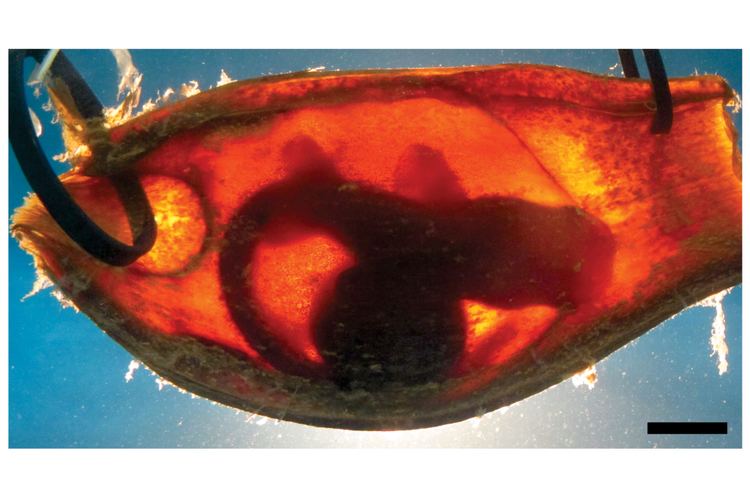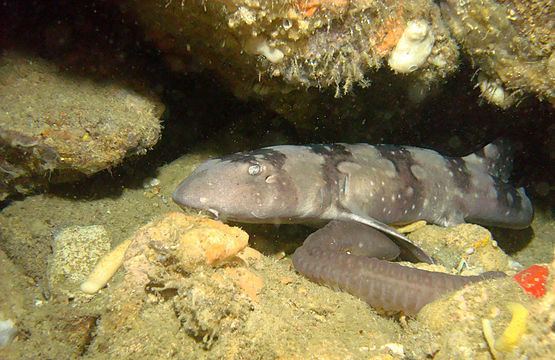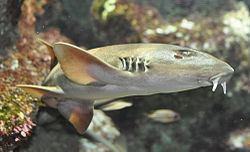Phylum Chordata Rank Family | Scientific name Hemiscylliidae Higher classification Carpet shark Order Carpet shark | |
 | ||
Lower classifications Brownbanded bamboo shark, Lip sharks, Whitespotted bamboo shark, Hemiscyllium, Epaulette shark | ||
The Hemiscylliidae are a family of sharks in the order Orectolobiformes, commonly known as longtail carpet sharks and sometimes as bamboo sharks. They are found in shallow waters of the tropical Indo-Pacific.
Contents

They are relatively small sharks, with the largest species reaching no more than 121 cm (48 in) in adult body length. They have elongated, cylindrical bodies, with short barbels and large spiracles. As their common name suggests, they have unusually long tails, which exceed the length of the rest of their bodies. They are sluggish fish, feeding on bottom-dwelling invertebrates and smaller fish.

Chiloscyllium

This genus is distinguished by a relatively long snout with subterminal nostrils. The eyes and supraorbital ridges are hardly elevated. The mouth is closer to the eyes than to the tip of the snout, with lower labial folds usually connected across the chin by a flap of skin. The pectoral and pelvic fins are thin and not very muscular. No black hood on the head or large black spot on the side is present (though juveniles often are strongly marked with dark spots/bars).

Hemiscyllium
This genus is confined to tropical waters off Australia, Papua New Guinea, and Indonesia, but an individual from this genus, possibly representing an undescribed species, has been photographed at the Seychelles. They have short snouts with the nostrils placed almost at the tip, and well-elevated eyes and supraorbital ridges. The mouth is closer to the tip of the snout than the eyes, and lacks the connecting dermal fold across the chin. The pectoral and pelvic fins are thick and heavily muscular. Either a black hood on the head or a large black spot on the sides of the body is present.
Nine recognized species are in this genus:
Fossil taxa
Captivity
Hemiscylliid sharks are sometimes kept in home aquaria. Species from this family are ideal aquarium sharks because their natural habitats are tidepools, coral beds, and around boulders. This predisposition towards relatively confined spaces helps them adapt better to home aquaria compared to other species. Their generally small size for sharks and their preference for water temperatures comparable to those enjoyed by other common aquarium fish have also endeared them to marine aquarists. Multiple species of hemiscylliids have been successfully induced to breed in captivity.
Full-sized adult epaulette sharks are most successfully housed in tanks at or exceeding 680 litres (180 US gal), while adult bamboo sharks require more space and are known to do well in 910-litre (240 US gal) aquaria. Hemiscyliids in captivity are provided artificial caves for them to hide. However, unstable tank decor has been known to cause fatal injuries when the structure is disturbed by the sharks' digging behavior.
Parthenogenesis
The British press on February 10th 2016 reported that a bamboo shark at Great Yarmouth’s Sea Life Centre was pregnant with two fertilized eggs. It is known that the shark has not come into contact with any other bamboo sharks since 2013. Although parthenogenesis is observed in a small number of species, this is such a rare occurrence in this species that it became a news story.
